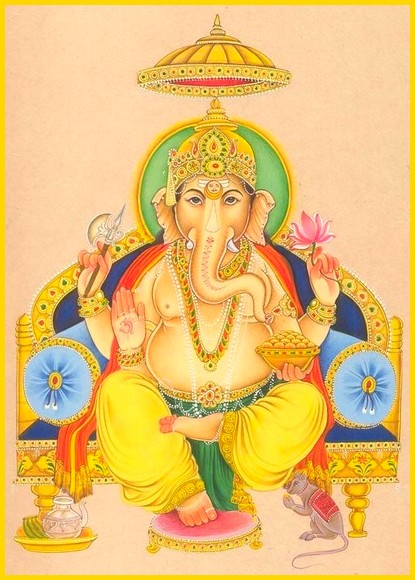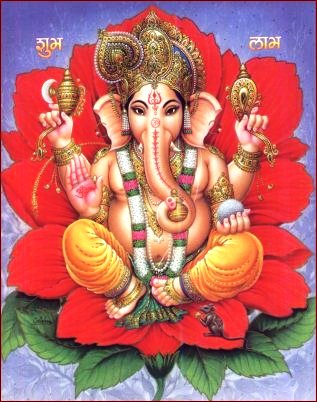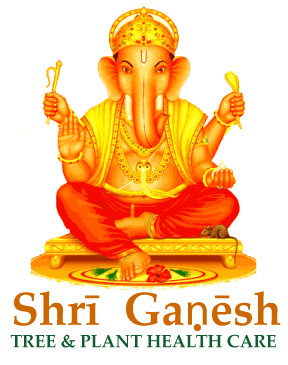Who is Ganesh?
The God of Good Luck and Auspiciousness
Who is Ganesh?
Ganesh is an extremely popular God in India

The elephant-deity riding a mouse — has become one of the commonest mnemonics for anything associated with Hinduism. This not only suggests the importance of Ganesh, but also shows how popular and pervasive this deity is in the minds of the masses
Ganesh is the Ever-Blissful, elephant-headed deva (god) who is lovingly worshipped and revered by millions of people worldwide.
Although Ganesh is known through the Hindu religion, Shri Ganesh transcends religion and is loved by many non-Hindu’s.
Ganesh, is the God of Good Luck and Auspiciousness and is the Dispeller of problems and obstacles. He is also worshipped as the God of wisdom, wealth, health, celibacy, fertility and happiness.
He is also the God of education, knowledge and wisdom, literature, and the fine arts.
The son of Shiva and Parvati, Ganesh has an elephantine countenance with a curved trunk and big ears, and a huge pot-bellied body of a human being. He is the Lord of success and destroyer of evils and obstacles. He is also worshipped as the god of education, knowledge, wisdom and wealth. In fact, Ganesh is one of the five prime Hindu deities (Brahma, Vishnu, Shiva and Durga being the other four) whose idolatry is glorified as the panchayatana puja.
Origin of Ganesh

Perhaps the most popular story regarding Ganesha’s origin is the one derived from the Shiva Purana. Mother Parvati once wanted to take a bath and created a boy from the dirt of Her own body, asking him to stand as a guard outside while She bathed. In the meantime Lord Shiva returned home to find a stranger at His door, preventing Him from entering. In anger, Shiva cut off the boy’s head, upon which Parvati was stricken with great grief. In order to console Her, Shiva sent out his troops to fetch the head of anyone found sleeping with his head pointing to the north. They found an elephant sleeping thus and brought back its head.
Shiva then attached the elephantine head to the body of the boy and revived him. He named the boy Ganapati or commander of His troops, and granted Him a boon that anyone would have to worship Him (Ganesha) before beginning any undertaking.
Mystery of Ganesh
Once there was neither Being nor Nonbeing. There was neither Form nor Formlessness. Then, That which was hidden within Itself, That One, stirring, emerging, coming to be. From Itself to the Formless to the Form. Immutable, changeless, everywhere, pervading all, yet not physically such is the mystery. Suddenly an ancient note piercing the darkness. A song whose birth stirred the slumbering, summoning an eternal mystery to awaken. Emerging from deep within the hidden cave, the human heart, Ganesha’s truth flows from the icecave of the infinite. Housed within our gated dwelling, Ganesha the guest loved and longed for. That which has no form, can take a form. That which has no name, can take a name. From the formless to form, and back again and again and again. The wheel of time gathers speed, and somewhere between fact and legend, vision and myth, we ask, “Who is Ganesha? There are those who lovingly sing his praises. There are those who worship and adore him. There are those who represent him in art and literature. There are those who tell stories about him. There are those who chant his glory. There are those who seek his darshana. There are those who invoke and invite his blessings. The thinkers think, the scholars scholasticise, the devotees worship. But what is Ganesh’s hidden meaning? There is a long and hoary lineage of seekers, scholars, sycophants, who have attempted to plumb the mysteries of the elephant-headed one. Anthropologists, Artists, religious Aspirants, Historians, Indologists, Linguists, Philosophers, Religionists, Sociologists, and contemporary devotees of Ganesha are but some of the most recent representatives of this enquiry. Each group has attempted, and continues to attempt, to make sense of this enormously popular deity. Seemingly incongruous facts simultaneously coincide. Ganesha embodies: An enormous popularity that transcends sectarian and territorial limits; a seemingly rather late, yet dramatic, full-blown appearance into a religious pantheon; a confusing, conflicting, yet interesting and intriguing mythology; and an elephant’s head atop a plump human body! To further complicate the picture is the fact that the physical representation of Ganesh offers more iconographic variations than does that of any other Indian deity. Couple this with the fact that Ganesha literature is rife with a seemingly endless number of stories on an unexpectedly limited number of themes. O Ganesha, who are you really? Tell the others what you want, tell them anything, but between you and me, who are you really?
What Ganesh Stands For

Ganesha has four arms which symbolize his status as the universal ruler and establish his power over the four categories of beings – those who can live only in water, those who can live in water and on earth, those who can live only on earth and those who can fly in air. Significance of four : It was god Ganesh who instituted the four castes and the four Vedas. One hymn in Sri Bhagavat Tattva , says: ‘In heaven, this child will establish the predominance over gods, on earth over men, in the nether world over anti-gods and serpents. He causes the four principles of the elements to move and is therefore four armed. In one hand, he holds a shell, in another a discus, in the third a club or a sweet and in the fourth a lotus.’ Thus, all aspects of Ganesh’s form are filled with symbolic meanings.
Significance of the Ganesh Form
Ganesh’s head symbolizes the Atman or the soul, which is the ultimate supreme reality of human existence, and his human body signifies Maya or the earthly existence of human beings. The elephant head denotes wisdom and its trunk represents Om, the sound symbol of cosmic reality. In his upper right hand Ganesh holds a goad, which helps him propel mankind forward on the eternal path and remove obstacles from the way. The noose in Ganesh’s left hand is a gentle implement to capture all difficulties.
The broken tusk that Ganesh holds like a pen in his lower right hand is a symbol of sacrifice, which he broke for writing the Mahabharata. The rosary in his other hand suggests that the pursuit of knowledge should be continuous. The laddoo (sweet) he holds in his trunk indicates that one must discover the sweetness of the Atman. His fan-like ears convey that he is all ears to our petition. The snake that runs round his waist represents energy in all forms. And he is humble enough to ride the lowest of creatures, a mouse.
The Vehicle of Ganesh
Sathya Sai has said, “The mouse is the vehicle of Vinayaka. What is the inner significance of the mouse? The mouse has a keen sense of smell. The mouse is a symbol of the attachment to worldly tendencies (vaasanas). It is well known that if you want to catch a mouse, you place a strong-smelling edible inside the mouse-trap. The mouse also symbolizes the darkness of night. The mouse can see well in the dark. As Vinayaka’s vehicle the mouse signifies an object that leads man from darkness to light. The Vinayaka-principle, thus, means that which removes all the bad qualities, practices and thoughts in men and inculcates good qualities, good conduct and good thoughts.

